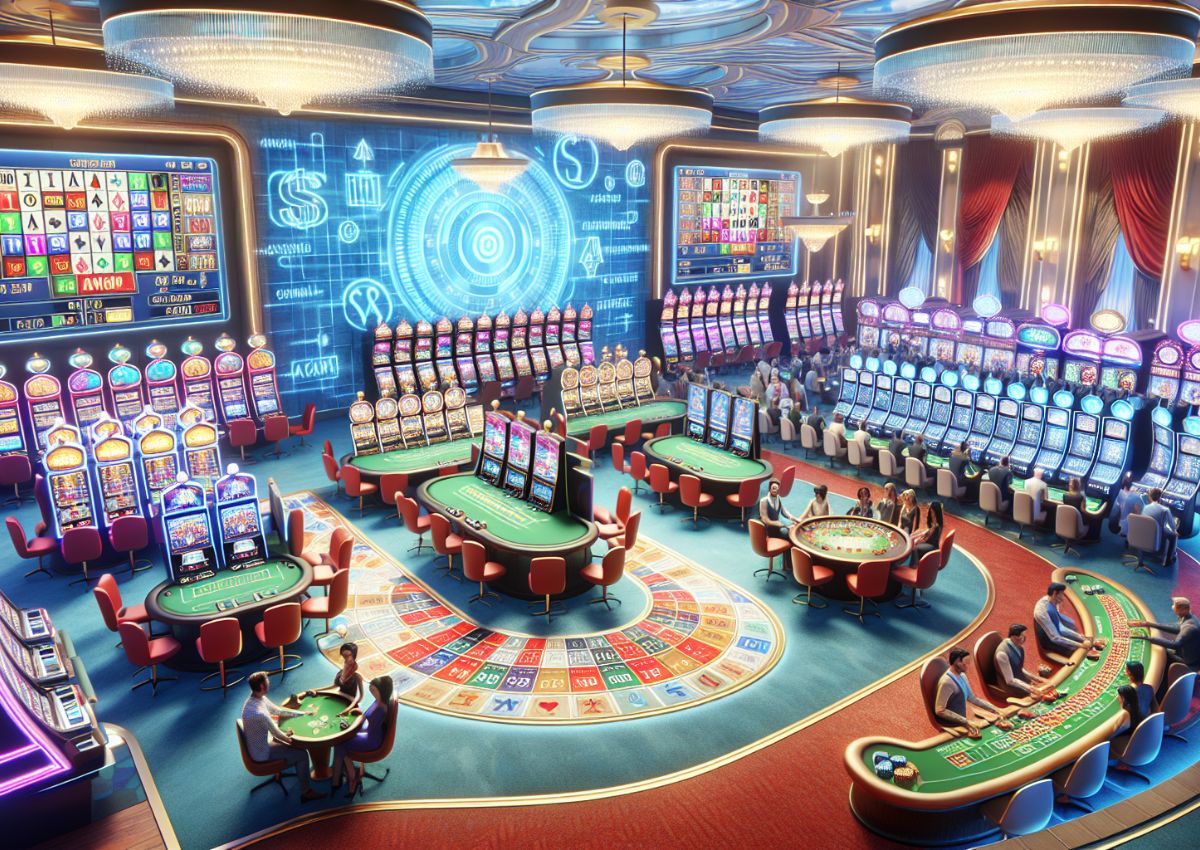
Beneath the shimmering lights plus those alluring noises of spinning reels lies an vibrant world in which creativity meets numbers: the making of casino games. While players flock to casinos seeking thrills and the possibility of striking it rich big, a huge amount of effort takes form behind closed doors to create these games for their enjoyment. From the starting concept to the final product that players interact with, many elements are brought together to ensure a captivating play experience.
Designers, engineers, plus game creators collaborate to merge cutting-edge technology with engaging gameplay features. Every aspect, from graphics and sound effects to probabilities and returns, is carefully designed to draw in players and keep them engaged. Understanding the intricate process of how casino games are made reveals not only the technical skills required but also the artistic vision that transforms these engaging experiences to life.
Video Game Development Workflow
The design workflow begins with idea generation and concept development, where creators generate ideas for new casino games. This initial phase often involves identifying target audiences and understanding market trends. Designers consider factors like game mechanics, themes, and payout structures to create an engaging experience. Collaboration between game designers, mathematicians, and artists is crucial to guarantee a balanced concept.
Once a design is selected, the next stage entails creating prototypes and testing. Designers build a functional version of the game to evaluate its playability and mechanics. This facilitates adjustments and refinements based on feedback from testers. Reiteration is vital, as designers may go through multiple rounds of evaluations to optimize gameplay balance and user experience. This stage is crucial for spotting any possible issues before the game goes into production.
After testing, the game moves into development and production. This includes the technical aspects of coding the game software, integrating graphics, and ensuring compliance with gaming regulations. Quality assurance testing verifies that the game functions seamlessly across different platforms and devices. Once everything is polished, the game is prepared for launch, usually accompanied by marketing strategies to draw in players and generate buzz around the latest casino game.
Technology and Advancement
The development of gambling games has changed significantly with developments in tech. Modern game design often includes top-notch graphics, captivating sound effects, and engaging animations that deliver a compelling experience for players. Game developers use advanced software tools and programming languages to build these immersive gaming experiences. Additionally, the use of RNGs ensures fairness and unpredictability in outcomes, which is essential for maintaining player trust and compliance with gaming regulations.
In the past few years, the surge of online casinos has pushed the limits of game development even further. Developers are now able to design games that cater to a worldwide audience, incorporating features such as live dealers and virtual reality environments. This transition has encouraged innovation, leading to unique game mechanics and formats that enhance player engagement. Mobile gaming has also become a major focus, driving developers to optimize games for smartphones and tablets, ensuring accessibility and convenience for players on the go.
Collaboration among designers, visual artists, and math experts is essential in the development process. Each team brings their knowledge to make sure games are not only visually appealing but also mathematically sound and enjoyable. The integration of player feedback during beta testing allows developers to improve game features and functionalities, ultimately leading to a positive launch. As technology continues to advance, the potential for innovative game concepts and experiences is endless, promising an enticing future for casino games. non GamStop casino
Assessing and Quality Control
Once a gambling game has been designed, it moves into the critical phase of testing and quality assurance. This stage ensures that the game operates flawlessly and provides a balanced experience for players. Teams conduct extensive tests, including operational checks to ensure that all game features work as intended. Each element, from visuals to audio, is reviewed to ensure quality benchmarks are met.
In addition to functionality testing, the game undergoes thorough compliance checks to meet regulatory requirements. Different jurisdictions have specific regulations governing game fairness and player protection. Quality assurance teams will check that the random number generators are operating correctly and that the game’s payout percentages correspond with market standards. This thorough examination helps establish trust with users and oversight bodies alike.
Finally, user testing may be conducted with real players to obtain opinions on user experience. This critical insight allows developers to implement necessary adjustments before the public launch. Addressing any potential issues identified during this phase helps ensure that users will experience a fluent, immersive experience when the game goes live. The commitment to quality reflects the sector’s dedication to delivering enjoyable and dependable casino games.
